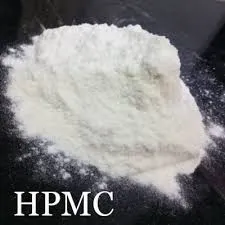
Dis . 06, 2024 16:53 Back to list
Understanding HPMC and Its Applications in Various Industries
Understanding HPMC What It Is and Its Significance
Hydroxypropyl Methylcellulose (HPMC) is a cellulose derivative that has gained wide acceptance across various industries due to its unique properties and multifunctional applications. As a water-soluble polysaccharide, HPMC is primarily derived from natural cellulose, which is modified to enhance its solubility and performance in different environments. This article aims to delve into the characteristics, applications, and significance of HPMC, providing a comprehensive understanding of this versatile compound.
Properties of HPMC
HPMC is characterized by its ability to form gels and stabilize emulsions, which makes it a valuable ingredient in various formulations. One of the notable properties of HPMC is its thickening capability, allowing it to increase the viscosity of solutions without altering their chemical composition. This property is crucial in industries like food production, pharmaceuticals, and cosmetics, where optimal texture and consistency are paramount.
Another critical aspect of HPMC is its film-forming ability. When applied to surfaces, it can create a thin, protective film that is resistant to moisture and harmful agents. This feature is particularly useful in the construction industry, where HPMC is used in mortars and adhesives to improve workability and durability.
HPMC also exhibits excellent thermal stability and high compatibility with various substances, further expanding its applications. It is non-toxic and has a low irritation potential, making it safe for use in consumer products.
Applications of HPMC
1. Pharmaceuticals HPMC is widely used in the pharmaceutical industry as a binder and coating agent in tablets and capsules. Its controlled-release properties allow for the gradual release of active ingredients, improving the effectiveness of medications. Furthermore, HPMC is utilized in various formulations, including eye drops and gels, due to its ability to retain moisture.
2. Food Industry In food applications, HPMC serves as a thickener, stabilizer, and emulsifier. Its ability to improve texture and mouthfeel makes it an essential ingredient in a variety of products, including sauces, dressings, and dairy items. HPMC is also recognized for its role in gluten-free products, acting as a substitute for gluten to improve dough elasticity and structure.
hpmc que es

3. Cosmetics and Personal Care In the cosmetics industry, HPMC is frequently used as a thickening agent in creams, lotions, and shampoos. Its ability to retain moisture also makes it beneficial in hydrating products. Additionally, HPMC is used in gels and other cosmetic formulations due to its stability and compatibility with various ingredients.
4. Construction HPMC’s water retention and binding properties are valuable in the construction industry. It is often found in tile adhesives, plaster, and joint compounds, where it helps improve workability and adhesion. Its film-forming ability contributes to the strength and durability of construction materials.
5. Agriculture HPMC is also utilized in agricultural applications, particularly as a thickening agent in pesticide formulations. Its ability to enhance the adhesion and spreadability of pesticides on plant surfaces improves the efficacy of agricultural products.
Significance of HPMC
The significance of HPMC extends beyond its physical and chemical properties; it represents a fusion of technology and nature, reflecting the shift towards safer and more sustainable materials in product formulations. As consumer awareness regarding health and environmental impact grows, manufacturers are increasingly adopting natural derivatives like HPMC to meet market demands.
Furthermore, ongoing research continues to explore innovative applications of HPMC across various sectors. Its multifunctionality and adaptability position it as a key ingredient in the development of novel products.
Conclusion
Hydroxypropyl Methylcellulose (HPMC) is a remarkable compound with diverse applications across industries ranging from pharmaceuticals to food, cosmetics, and construction. Its unique properties, including thickening, film-forming, and water retention, contribute to its effectiveness and versatility. As the demand for natural and sustainable solutions increases, HPMC stands out as a vital ingredient that meets these evolving consumer needs. Its continued exploration and application will likely foster further advancements in product development and innovation, solidifying its role in modern manufacturing practices.
-
Unlocking the Benefits of HPMC Products: A Gateway to Versatile Applications
NewsAug.07,2025
-
Unleashing the Potential of HPMC Ashland: A Comprehensive Look
NewsAug.07,2025
-
Tile Bonding Cellulose: The Key to Superior Adhesion and Durability
NewsAug.07,2025
-
Hydroxypropyl Methylcellulose Powder: The Versatile Component in Modern Pharmaceuticals
NewsAug.07,2025
-
Hydroxyethyl Cellulose: The Versatile Solution for Various Industries
NewsAug.07,2025
-
Hydroxyethyl Cellulose (HEC): The Versatile Polymer for Various Applications
NewsAug.07,2025







